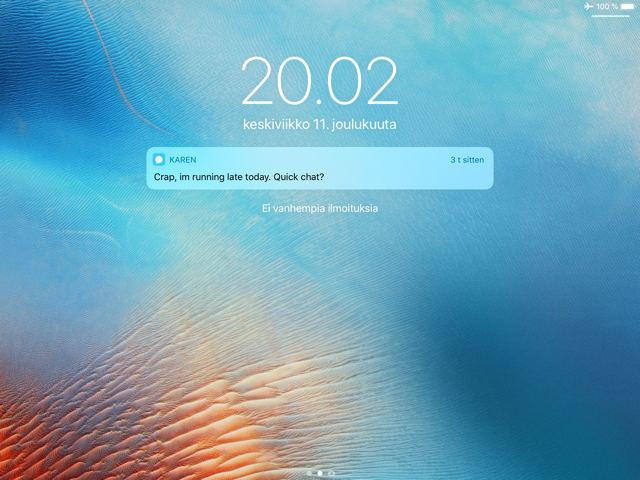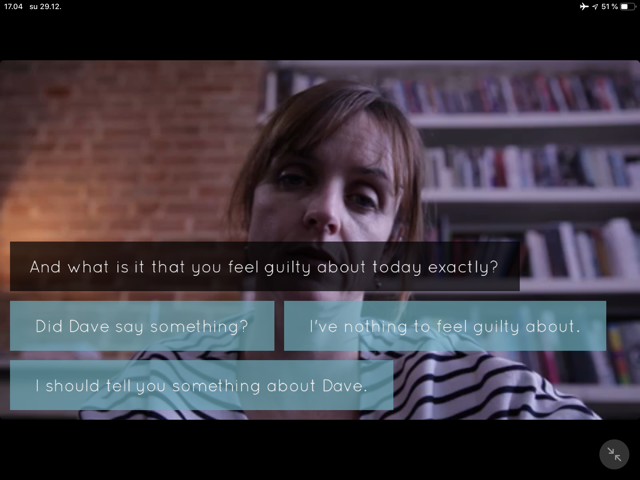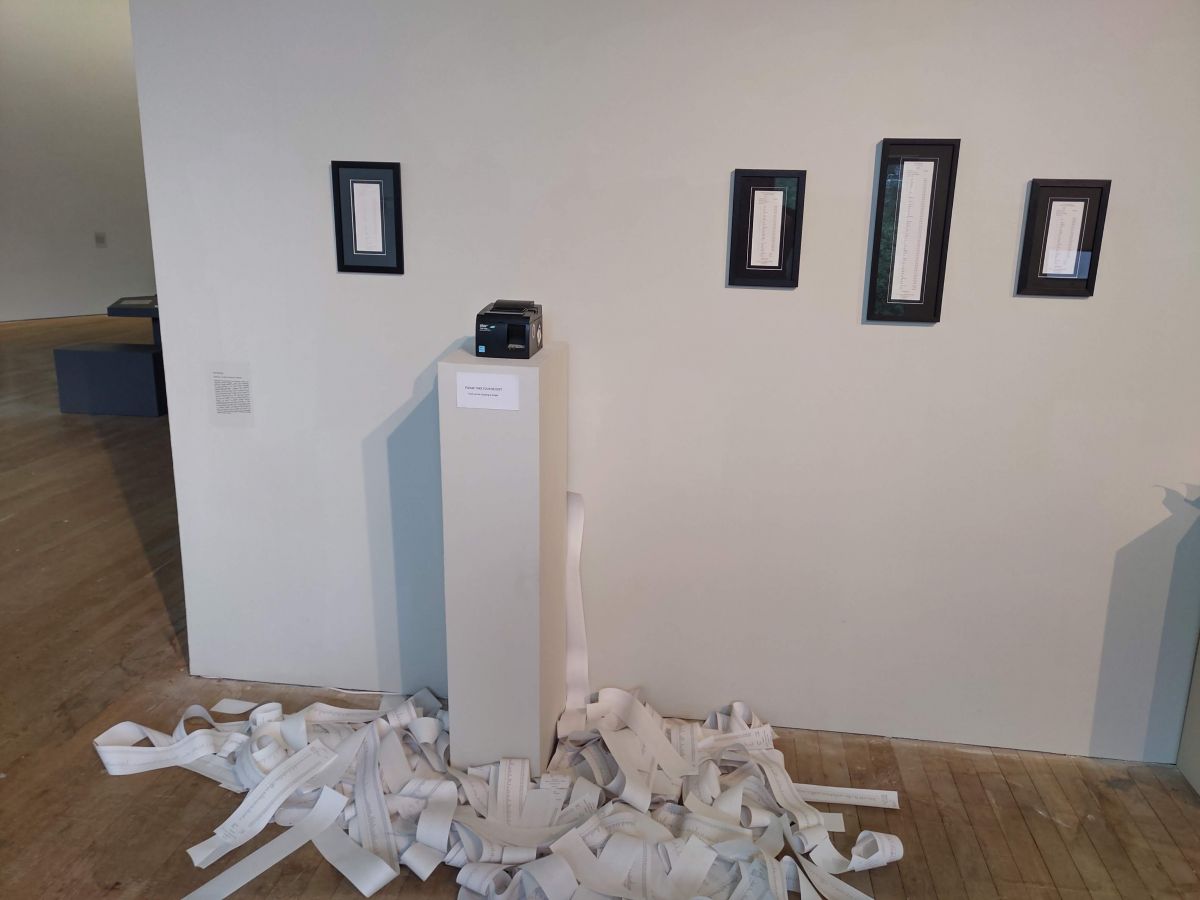For this issue of Nokturno we invited poet and scholar Matti Kangaskoski to curate us a selection of contemporary digital poetry.
Dear Reader of Nokturno,
The works presented in this issue are Ian Hatcher’s Rumble Pak, Pip Thornton’s {poem}.py, Stephanie Strickland’s Ringing the Changes and Liberty Ring!, and Blast Theory’s Karen. As the guest-curator of this issue, I selected these four clusters of works by authors (and a group) whose artistic practice I find continuously inspiring in my own work as researcher and poet. I also wanted to present works and authors that potential readers of Nokturno might not have encountered before.
All the works are beautiful and independent artistic pieces on their own, but there is a common thread that connects them in this issue. I am fascinated by literary works that borrow their form from a wholly other area of thought and experience and repurpose it into something new. And in this something new, a work of art, both the literary and the other form – be it the ancient bell ringing method used in Ringing the Changes or Google’s advertising logic employed in {poem}.py – are revealed in a new light. A clash of forms is always simultaneously a clash of ideas, conventions, and modes of operation. This clash is, in short, enlightening.
Below the reader will find descriptions of the individual works in their own sections. In most cases I have included some explanation of the works along with my own interpretations. If the reader does not wish to be conditioned by these, I suggest looking at the works first, and then coming back to the below descriptions which also provide suggestions for further reading. I wish to thank the authors as well as Nokturno for enabling this issue. Read and enjoy!
I.
Ian Hatcher’s new piece Rumble Pak can be read in – at least – two complementary ways. The reader can move from observing the slot machine, spinning weather icons, to reading the text. Alternatively, one can listen to the audio while being mesmerized by the repeating spins.
I first saw Hatcher perform in Paris in 2013 and was instantly intrigued. Hatcher’s performances embody the intermingling of digital and organic forms of life. His vocal output sounds like automated, synthetic speech, and his bodily presence is cyborgian – without technical effects. From the point of view of embodiment, I think it is crucial that Hatcher has internalized the tone, cadences, accents and articulation in a way that he can fluently imitate a machine that imitates a human. We hear this embodiment in the audio of Rumble Pak, and the interested reader can find more at ianhatcher.net.
A similar negotiation happens in Prosthesis (2016), a print book in which written language and the logic of digital code and interfaces intertwine. In this way, both in the performances and the printed book, the differences and similarities between natural language and its logic of thought and digital language and logic become visible, often accentuated by humor. The effect is defamiliarizing in precisely the way in which something familiar and habitual becomes new and seen again.
In Rumble Pak the negotiation is of a new kind. This work explores what Natasha Dow Schüll – to whom the work is dedicated – calls the “ludic loop” or the “machine zone”, a kind of repeated escape from the world, here through immersion into playing slot machines. This immersive escape is like the dark side of the sought after creative flow state; except here the flow-like state is hijacked by not creation but by repetition of the same with the smallest possible chances of winning. Dow Schüll notes that for some gamblers winning can be disappointing if it happens too often because it interrupts the zone. The zone itself becomes the focus of the activity and the reward is the activity itself.
I have no trouble relating this to everyday activities of browsing in social media or playing mobile games which are precisely designed to grab the player’s attention and to hold it with small repetitive tasks and ephemeral rewards. Rumble Pak spins weather forecast icons, and, especially in the midst of an unusually warm January in Helsinki, I cannot help but make the connection between the catastrophic changes in climate and the false comfort of the ludic loop. Hatcher’s new piece deals with this familiar and ubiquitous, but far from insignificant, phenomenon with heart-warming sensitivity.
Besides, you can get stuck in the zone waiting for the weather icons to line up in a perfect row of five suns, five thunder clouds, five rain clouds, five snow clouds, a car spinning out of control…
II.
I came across Pip Thornton’s conceptual-poetic work {poem}.py last summer at the Electronic Literature Organisation Conference and Media Festival in Cork. It was exhibited in the Glucksman Art Museum as part of the media festival program. On the face of it, the work consists of a receipt printer that pushes out a receipt at regular intervals and the receipts gather around the pole on which the receipt printer stands. At a closer look these receipts, however, consist of poems.

When I was standing there, looking at its steady production of poem-receipts, it sprouted out a poem by the Finnish poet Eeva Kilpi, “He Stepped Inside My Door”. Being a Finn myself I was delighted by the coincidence and was able to take the very receipt with me and scan it for this issue. The combined cost of the words in the poem is 14.22£ and it has a note “Thank you for shopping with Google”. What does this mean?
{poem}.py, in addition to its playful intermediation (receipt + poem), offers a critique of linguistic capitalism. It uses Google AdWords keyword planner to calculate the monetary value for the words in the poem. Google AdWords works according to the following logic: every time a linguistic search is made on Google’s search engine, a small auction takes place, and this auction determines the order of search results on the user’s interface. The entity that wins the auction is presented on top of the page of results with a small “Ad”-box attached to it. When the advertised result is clicked upon, Google makes profit. This profit is no small part of Google’s revenue and it can be with good reason called, as Thornton does (following Frederic Kaplan), linguistic capitalism. {poem}.py uses the free AdWords planner, a tool for advertisers to plan their budget with the words that they intend to advertise, to calculate the price for each word in a poem and then prints it out in the form of a receipt, displaying the monetary and poetic value of the words in tandem.
It should be mentioned, however, that the poem is presented on the receipt as a list of words in the order of their appearance. Every word is printed only once and, like items on any shopping receipt, the total amount of a particular word in the poem is listed next to it. Therefore, another kind of reduction is at play as well, and the reader is left to set the repeated words in their place.
Reading these poem-receipts enables a unique kind of social analysis. Reading for example Leonard Cohen’s or Raymond Carver’s poems and comparing the prices of the words, one can deliberate why the word “will” is more expensive than others. “Will”, in the meaning of testament is a lucrative area for advertisers of, for example, legal counseling. Similarly, the word “beloved” in Carver’s poem appears to be the most expensive; it is not hard to imagine what kind of market competes for this keyword. As Thorton puts it: “Perhaps unsurprisingly, it seems the cost of a word to Google relates to the size and wealth of the industry it plays a part in advertising.” You can read more about the concept by Thornton herself here.
A broader implication of {poem}.py is how crucially important it is to have one’s product on the top of the list of search results. This is, of course, not limited to words and Google’s search results, but concerns cultural products as such: books, movies, fine art, songs, performances, and individual poems (on e.g. Instagram). These cultural products also compete for their place (or their avatar’s place) in the hierarchy of visibility on digital interfaces, be it a Google search, the top ten trending list of a bookshop’s website, or a virality peak on social media. Being on any such list not only attracts attention to your product, it affects evaluation as well. Increasingly, cultural value is measured through visibility in media. The window of attention is very small which makes the competition quite brutal. How does this affect the form and content of cultural products? In my reading, Pip Thornton’s poem-receipts are like symbols of the logic of visibility on cultural digital interfaces.
III.
Stephanie Strickland’s new work Ringing the Changes continues the conceptual-poetic strand of this issue. Nokturno has the honor of presenting an exclusive section, published nowhere else, hand-picked from an alternative version of the book. In addition, Liberty Ring!, the digital application of the work, is first published here in Nokturno. I will come back to Liberty Ring! below. Let us first discuss the concept behind the works.
Ringing the Changes is a work that delightfully boggles the mind: it is based on the ancient art of tower-bell ringing in England. “For sport”, as Strickland writes in the book, “ordinary folk in seventeenth century England created highly structured ringing sequences. We now understand these as group-theory symmetry operations.” In this sport, all possible arrangements of seven bells are rung in order, none of them repeating. One arrangement is called a change. With seven bells there are 5040 changes and ringing them through takes approximately three hours. Every bell has a ringer, who has memorized their placement in each change and has to be able to play the bell with accuracy. It is clear that this kind of sport requires concentration, a sharp memory, motivation and accuracy. A modern application of bell ringing can be seen here.
With this analogy in mind we are to travel to the printed book of poetry, which takes as its form the mathematically organized changes of seven bells, albeit showing only the first 161 of them. In place of each bell, the book has 23 texts, which Strickland calls “overtones.” The overtones are programmed to appear randomly for each bell. To make it clear: seven bells, each permutating 23 possible texts. The first change is 1,2,3,4,5,6,7 from which the poem proceeds for a total of 161 changes; all texts appear seven times. In addition, all bells have their own theme and source. Strickland mentions, for example, the following sources: Sha Xin Wei, Simone Weil, Sylvia Wynter, Hito Steyerl, and Yuk Hui.
From the reader’s point of view, the obvious question (at least before reading) is: What is the point of this elaborate operation? My interpretation is that Ringing the Changes deals with the questions of reading, the limits and workings of attention, human agency – and through these questions it probes the question of understanding itself. Let me explain. Similarly to bell ringing, the reading of this text requires careful attention and active participation – in thinking through the questions and ideas that the poem presents. The structure of repetition, never repeating exactly the same, examines on the one hand how the meaning of these texts change when they are set in seven new contexts, and, on the other hand, this form enables rereading in a way otherwise hard to achieve, or perhaps just rare. After the first 23 pages, when all the texts of the seven bells have appeared once, the texts start to re-appear. The exhilarating discovery here, at least for me, was that I did not remember reading some texts at all, some texts I remembered well, and most texts seemed different or I understood them differently, and in all cases they became more meaningful. When reading them for the third or fourth time, it becomes increasingly easier to find interpretations and set them in broader contexts. At the same time, the questions the text poses have to be re-thought, re-answered, re-oriented around. “Rereading”, Roland Barthes quips in S/Z, “saves the text from repetition. Those who fail to reread are obliged to read the same text everywhere.”
Personally I felt reading Ringing the Changes as a kind of peace. The repetition of the texts is like a wave that comes to the shore and splashes onto and against my mind. Rereading (I want to say: these days) is a too rare a pleasure. Reading Ringing the Changes is rereading. Like bell ringing, reading this book requires sustained attention.
Liberty Ring!, as mentioned, is the digital interactive companion to the printed book and you can ring its seven bells yourself. Instead of 23 overtone texts, this version has 11 texts. The bells, set in a circle, visualize the order of bells rung in each change. These texts speak more directly about timely issues, specifically the contemporary political climate of the U.S. The application has its own source texts from, for example, Achille Mbembe, Benjamin Franklin, Carolee Schneemann, Emily Apter, Frederick Douglass, Herman Melville, Joan Retallack, Keller Easterling, Samuel Taylor Coleridge, Shu Lea Chang, Stephanie LeMenager, The Framers. Finally, I warmly suggest the reader to explore Strickland’s other works at her home page.
IV.
Blast Theory’s Karen is in many ways an exception among these four works. Its form combines the mobile device logic of push-notifications, the concept of life coaching, and interactive theatre. Perhaps, rather than digital literature, it is more properly designated as digital interactive drama. I am making an exception also in the description of Karen; whereas conceptual pieces, in my view, are better understood and more enjoyable when the concept is discussed, works like Karen are best not explained much in advance. Nevertheless, I would like to offer some background and a few observations.
In Karen app, Karen is a life coach, who promises to coach my life according to an initial questionnaire, where I can calibrate my goals. Unusual, and, in my view, genius, is that the coaching is timed by the app over a couple of weeks (depending on the pace of participation) and happens in short sessions, or “calls.” The app therefore creates its own time uncontrollable by the reader. In addition, the application employs the push notification logic in a way that I still have not seen very often.

Yet it feels evident that literary-artistic apps should repurpose this quotidian push-notice logic for their own purposes. For Karen, borrowing its concept from session-based life coaching, the form is especially fitting. So, after the first session, Karen sends a notification when it is time for the next session, and then you call her. She poses questions to which you answer, like in the image below.

As you can apprehend from the question and the possible answers in the above image, everything does not go exactly professionally or, – since I do not have first-hand experience in being coached for life – what I imagine professional life coaching would proceed. But here I leave it to the reader to find out the development of the coaching for themselves.
Karen probes the boundaries between professional and intimate relations, between curiosity and spying, and between the public and private. It also builds a psychological profile that the reader can purchase in the end, if willing. You are reading Karen, and Karen is profiling you. In connection with Karen app, Blast Theory was planning an event for readers in which they would use the data gathered by the app. We can only imagine a theatre show in which the producers know a thing or two of every audience member; imagine, since the event was cancelled due to legal issues. Blast Theory has a long list of interesting projects and also a possibility to apply for an artist residency: www.blasttheory.co.uk.
*
This guest issue is curated by poet and scholar Matti Kangaskoski. His books include Tältä sinusta nyt tuntuu (2012; Teos), Sydänmarssi (2014; Teos), Pääkalloneuvottelut (2017; Teos), and the forthcoming Johdatus pimeään (2020; Teos). Kangaskoski’s academic work concerns the cultural logic of digital interfaces and their influence on thought and values, with a specific focus on literary production. Currently Kangaskoski is Postdoctoral Fellow in the Arts in Helsinki Collegium for Advanced Studies, University of Helsinki.
PS. from editor in chief: Open call for Nokturno´s Digital Residence of 2020 is now on. More information here.

